My father chose to remain in the navy for one year after the end of the World War II. The navy was still needed in the aftermath of the war to ‘clean up’ the devastation caused by the enemy. Not least, this seemed to provide employment for my father in Burma first in a naval capacity in 1945 and later in a civil capacity from about 1946-1947 (although the dates are somewhat unclear).
My father probably first travelled to Burma in 1945 as a Royal Navy officer. There were only a few photos of my father related to his wartime duties in Burma, but my mother’s photo album contains several pictures of him taken there during that time.
Photo Evidence
He had scribbled various notes on the backside of the photos. His ‘scrawly’ notes only contribute to further confusion. In addition, the photos are of poor quality. Nevertheless, I will include them here and try to make some remarks about them.
Servants’ Quarters
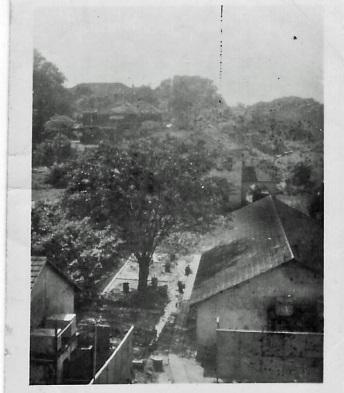 | 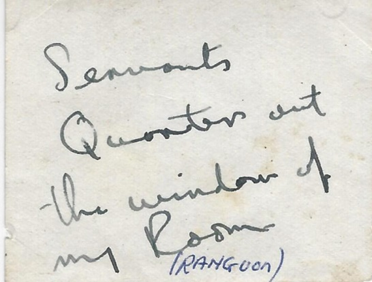 |
Despite the poor quality and the illegibility of the flipside notes, the photos provide plenty of information. For instance, there is a photo of the ‘servants’ quarters (see above). Burma had struggled for independence for many years but didn’t become independent until 1948. Thus, the British could still expect to have ‘servants’ before this period.
Group Photo
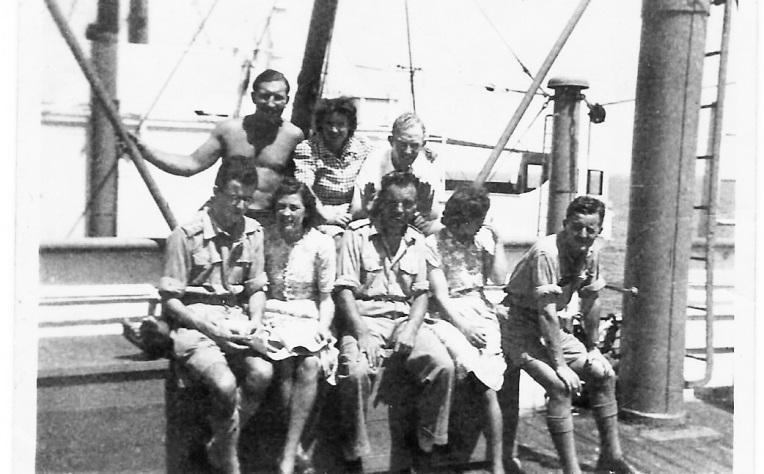 | 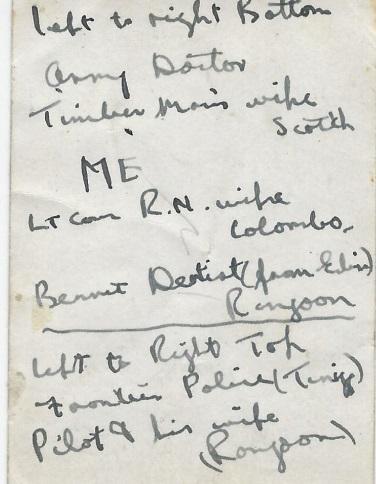 |
The note on the backside of the photo showing my father sitting together with several others on the deck of a ship:
Left to right bottom: Army doctor. Timber man’s wife (Scotch). ME (in the centre bottom row). Lt Com. R.N. wife Colombo. Bennet dentist (from Edinb.) Rangoon.
Left to right top: Frontier police (Ting**). Pilot and his wife.
Highland Princess
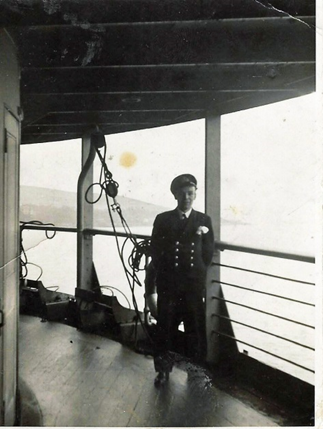 | 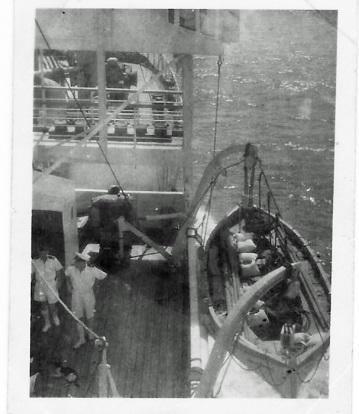 |
My father is standing on the deck of the ship’s bow in another picture.
According to the note on the back of the photo, the ship is called the ‘Highland Princess’ and is sailing to Burma in 1945. The ‘Highland Princess’ was used as a troop ship. As noted elsewhere, the Japanese were driven out of Burma in May 1945.
I should add that neither his handwritten CV nor his typewritten CV, mentions his naval service in Rangoon. The only evidence we have are the photos from Rangoon and my mother’s note stating that “Here is Alex leaving for Rangoon in 1945 on the Highland Princess”. It seems likely that he was engaged in a military capacity for the Royal Navy in Burma as an “Electrical Lieutenant in charge of plant and equipment used for degaussing.”
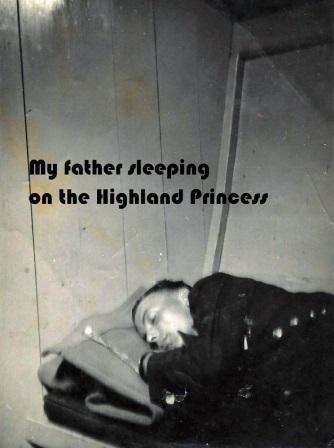 | 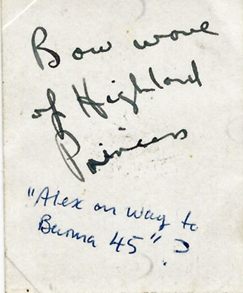 |
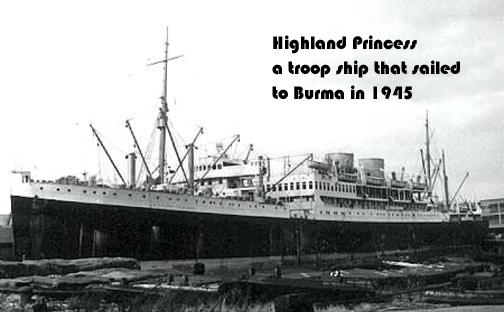


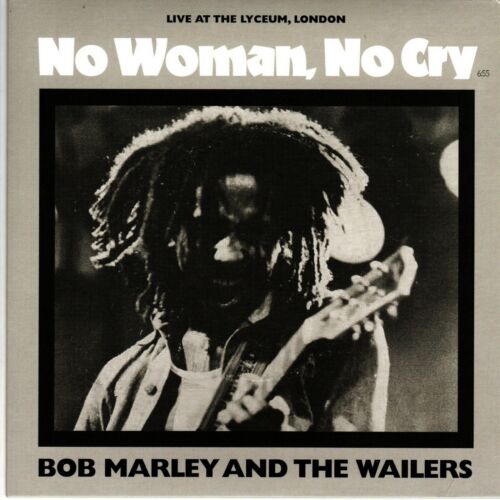
One Reply to “Burma after World War II”